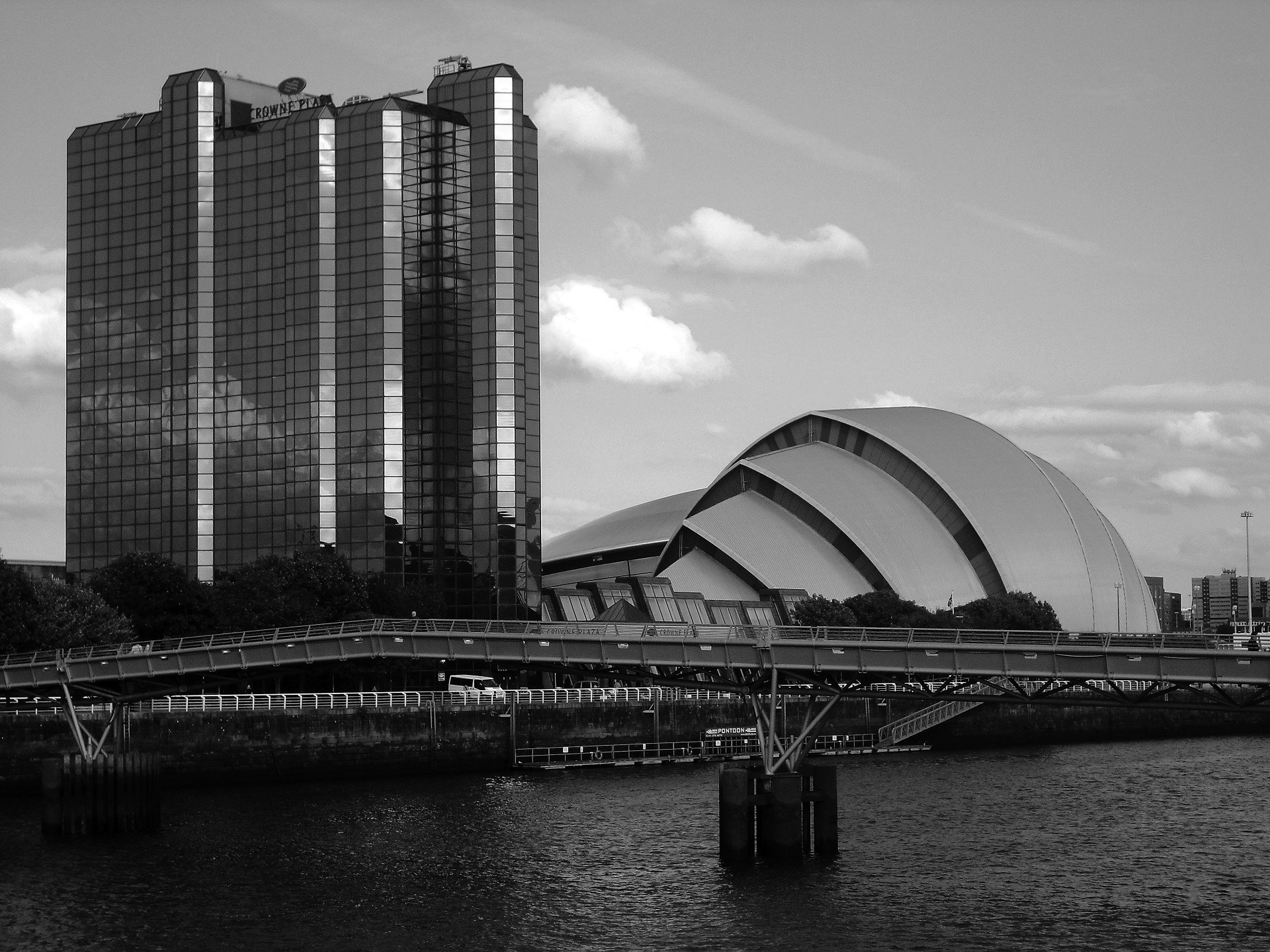On Wednesday, I travelled hopefully to COP26 – looking forward to the delights of the LNER high speed, low carbon, full fat English breakfast.
My best laid plans went awry as LNER cancelled and the much-delayed trip left most of us standing for four hours sustained by a bag of crisps and a recycled plastic bottle of water. It was thus very much better to have arrived than to travel hopefully.
Lesson 1: infrastructure is key. The 15-minute city is fine for living, working, school and shops, but a low-carbon country needs high-speed rail links.
After visiting our Edinburgh project, I travelled on to Glasgow, looking forward to updates from the front line
Lesson 2: we are climbing a mountain, so collaboration, safety ropes and a few ledges to pause and reflect are vital.
I learned that hotel prices were up and people were out but masked. The ‘big decisions’ were being made in private rooms, but attendance was deemed critical as it offered easy access to people and, importantly, ministers.
Lesson 3: in-person meetings still matter – buildings matter – as the backdrop to the theatre of everyday life.
Somewhat eerily, Thursday – Cities, Regions and Built Environment Day – was also Remembrance Day. There were echoes of the absurdities of Oh! What a Lovely War, in that the struggle to get attention/money/engagement in/for the carbon challenge in your field, your interests are actually best served by talking up your carbon emissions! Those involved in transportation are claiming they produce 29% of the world’s CO2, but the suspicion of built environment lobbyists is that that they are claiming buildings too. In this perverse world, we are still in the ‘lead’ at 38% rising to 40%.
Lesson 4: beware the law of unintended consequences…
The first ‘event’ was a multi-national key note on the need to act and, appropriately ,it focused on exemplars. UK government minister Eddie Hughes spoke of 175,000 jobs for the UK and of the regions sharing in the ‘spoils of the green revolution’.
Lesson 5: to get anywhere near where we want to go we need to ensure ‘our’ projects offer economic benefits to the wider community. If you are struggling to heat your house and feed your family, carbon is a distant future problem.
The UN’s speaker painted a picture of a monumental problem that is growing. We need to halve the CO2 footprint of our sector while we’re still producing more buildings: around the world, the equivalent of the city of Paris is built every week (hopefully with a little more variety than Haussmann’s monotonous model).
Lesson 6: energy, transport and buildings are the great emitters – again the mountainous challenge filled the horizon
Presentations on exemplars jumped from countries; to regions; to cities to major technology, construction and investment businesses. At all scales the theme was constant: resilience, action and ‘deep collaboration’.
Lesson 7: we know energy, transport and the built environment are completely interlinked, but we cannot wait for their integration. So think big picture, but focus on what we can achieve at a local/project level.
I attended to two more events before lunch. At the first, the department head of the City of Paris talked about city-wide ambition to half energy consumption. As Paris is built, and all but complete, this will be a retrofit project on an urban scale. Fosters’ sustainability lead talked about their building performance system, designed and used since the Paris Agreement. My key takeaway was that proximity of transport systems can halve or double a project’s carbon footprint. Paul Williams of Derwent London – my old friend, long-term client and ‘landlord’ – spoke of their long-term investment in architecture and working with their customers, the building users, to drive down operational energy. This is serious stuff: by installing 60,000 PV panels, they are evolving from being ‘just’ landlords to partners to energy suppliers.
All three talked of large amounts of green investment money. This was not the experience of the fourth speaker, on Africa’s cities. Maybe London can get ahead, but to climb the mountain we need everywhere to get ahead.
Lesson 8: we need to share resilient financial as well as carbon models – and keep reinventing both.
Next I caught up with my old friend and PPRIBA Sunand Prasad who, in between designing some delightful major pieces of social infrastructure – formerly known as hospitals – was presenting the work of the UKGBC Whole Life Carbon Roadmap. Lord Callanan joined him.
Lesson 9: Government, Governance and Regulation is crucial to help do what we do better and to drive more money into green investment funds, to finance reuse, renewal and re-building globally.
I left the COP inspired, drained and marvelling that some spent two weeks in the windowless forum. As intoxicating as the atmosphere is, those people have shown a very real commitment – an exemplar of what needs to come from us all
This weekend as we await news of the final commitments from the closed rooms, my immediate thought is that we all need to get back and get going – but in a different way – to work with our clients, consultants, constructors and communities to design and build our small part of the low-carbon future.
Lesson 10: The challenge is huge and to get to the stated goals we need more than just the warming spirit of deep collaboration. We need to endlessly reiterate and refine the way we operate and remain always self-critical – that’s the only way we can hope to be neither overwhelmed by statistics nor undermined by our own blind enthusiasm for the challenge







